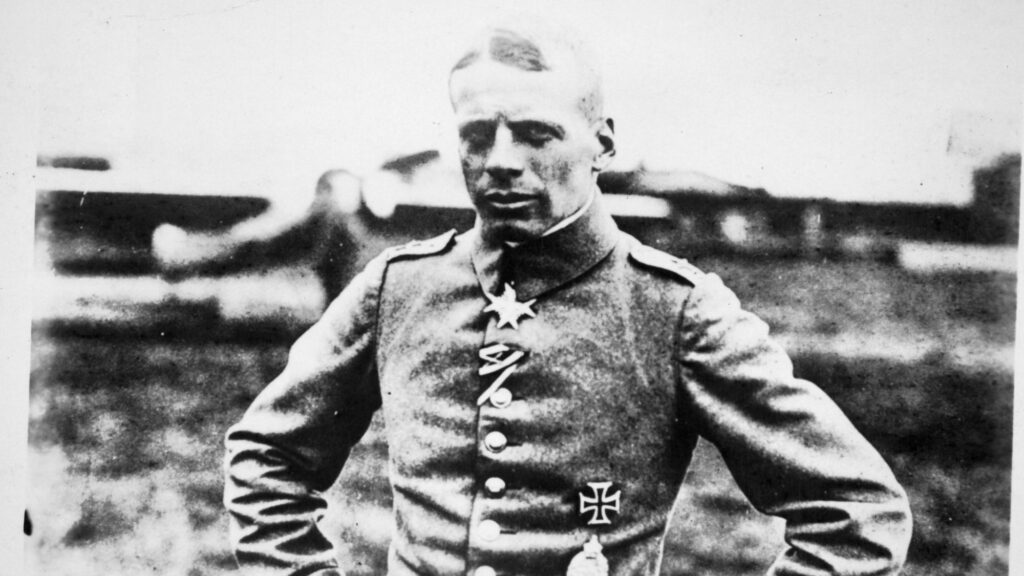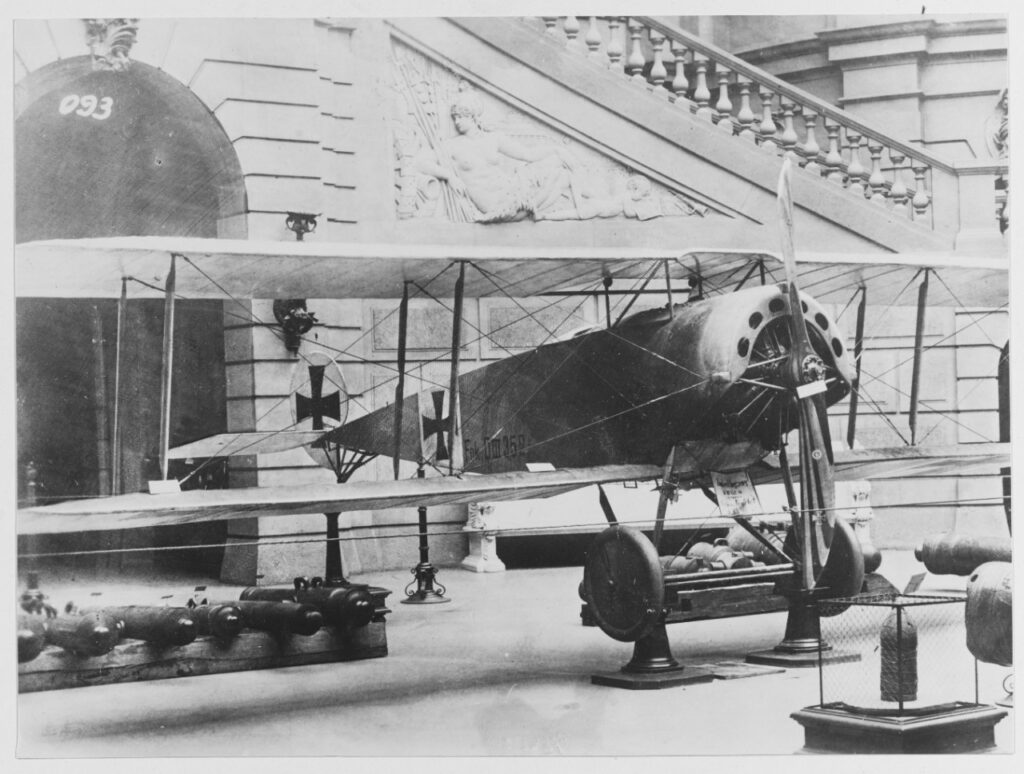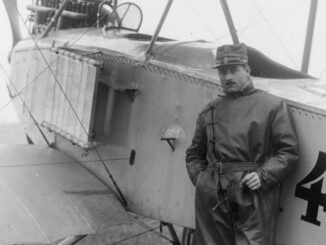 On 19th May 1891, Oswald Boelcke, pioneer aviator, World War I air ace and godfather of the German fighter aviation, was born in Giebichenstein, Saxony (now a district of Halle).
On 19th May 1891, Oswald Boelcke, pioneer aviator, World War I air ace and godfather of the German fighter aviation, was born in Giebichenstein, Saxony (now a district of Halle).
Oswald Boelcke was the fourth child and the youngest son in the schoolmaster family. His elder siblings were born in Argentina, where the Boelcke family spent a few years but returned to Germany six months before Oswald was born. The family name was actually spelt Bölcke, but later the spelling was changed to Latin transcription by Oswald and one of his brothers, Wilhelm.
Since their youngest years, Oswald and his brothers were raised with aim to join the army. Their parents were aware that in the then Prussian reality, military career was the best choice for a young man, able to assure high social status and stable income. However, Oswald´s path to officer ranks was not easy, as he was of rather poor health in his early years, suffering from pertussis and then asthma.
Nevertheless, Oswald Boelcke managed to improve his condition when he was a teenager. He started to train athletics, gymnastics and tennis, as well as became an oarsman, swimmer and finally an alpinist.
After graduating from high school, Boelcke joined the army. His first appointment was the position of cadet officer in a telegraph battalion, but in less than a year he attended the Military Academy in Metz. Boelcke completed that school in the mid-1912 and was commissioned an ensign. Shortly after, he was promoted to lieutenant.
Although Oswald Boelcke was seeing the aircraft from his early years, due to the fact his family was living close to Junkers factory in Dessau, he most probably performed his first flight only in 1913. At that time, Boelcke was on duty in Metz and was taken into the skies by pilots of the nearby stationing German aviation unit.
It looks like Boelcke was captivated by the spirit because soon after he asked for transfer to an aviation unit. In May of 1914, Oswald Bolecke was approved for pilot´s training and, without informing his family, started the pilot´s course at Halberstädter Fliegerschule (English: Halberstadt flying school).
On 14th August 1914, Oswald Boelcke received his military pilot´s licence. Within the next two weeks he also managed to convince Wilhelm, his older brother, to join the air force. Nevertheless, Wilhlem Boelcke decided to become an observer. At that time, it was the most respected position in military aviation, because pilots were considered just mere sky-chauffeurs.
At the beginning of the Great War, the Boelcke brothers both served at Feldflieger Abteilung 13 (English: 13th Field flying unit) and flew many missions together. They split at the beginning of 1915, when Oswald, already considered as experienced pilot, was transferred to Feldflieger Abteilung 62. There, he became friend with Max Immelmann and they both contributed to birth of the German fighter aviation.

The summer months of 1915 were marked by the beginning of real aerial warfare. With introduction of single-seat fighter aircraft, the aviators switched from initial, more or less accidental, fledging air combat to systematic hunt for enemy aircraft.
Names such as Roland Garros, Eugène Gilbert, Adolphe Pégoud, Lanoe Hawker, Hans-Joachim Buddecke, Otto Parschau and Kurt Wintgens were repeatedly appearing in newspapers and fighter pilots became the heroes of the nations. Shortly after, the term ´air ace´ was popularized – Pégoud became the first pilot dubbed the ace by French press and soon, the term was adopted by most of the air forces involved in the Great War. Boelcke and Immelmann joined that exclusive club of air aces by the end of 1915. At that time, Max Immelmann had already seven confirmed victories and Oswald Boelcke was credited with six.
Initially, German pilots seemed to overwhelm French and British fighters. From July 1915 to early 1916 – during the period of so-called Fokker Scourge (Fokker Scare) – the German Fliegertruppen (English: Flying Corps) ruled the sky, shooting down hundreds of enemy aircraft. The reason was Fokker Eindecker, the first fighter aircraft equipped with machine gun synchronised to fire between propeller blades.
That German air superiority ended in spring of 1916, with the arrival of Nieuport 11 and Airco DH.2 fighters. And it was soon marked by death of Max Immelmann, who was shot down on 18th June, at that time having seventeen confirmed victories.
At that time, Oswald Boelcke had already eighteen victories and was the highest-scoring German ace of the war. He was immediately grounded by Kaiser Wilhelm II, who was afraid to lose another ace in combat.
Boelcke used that time to complete his famous work – Dicta Boelcke. It was a pioneering study on aerial combat tactics – in fact the first fighter handbook in the world – and included list of basic aerial manoeuvres and dogfight rules. The German ace also published a brochure about his experiences on aerial warfare.
In July of 1916, Boelcke was sent to the Balkans and the Ottoman Empire. It was a combination of military inspection and celebrity tour. What´s more, he was also obliged to meet the majority of local high-ranked authorities. On his way back to Germany, Oswald Boelcke visited Russia to meet with his brother Wilhelm who was on duty in Kovel area.
After returning to Germany, Boelcke was assigned the task of creating Jagdstaffel 2 (English: 2nd Fighter squadron). New units, their organization and tactics implemented by the German air force had to be the answer to the French and British air superiority over the Western Front.
While creating his first own fighter unit, Oswald Boelcke recruited two pilots he met before – Manfred von Richthofen and Erwin Böhme. Although yet unexperienced, they made a good impression on Boelcke. Time has proven he was more than right, as both quickly became the aces.
The new German tactics and organization had soon achieved success. It seemed that skies over the Western Front again belonged to Luftstreitkräfte, as the reformed German air force was now designated. In September and October of 1916, the German fighters shot down more than two hundred enemy aircraft and lost just thirty-nine aeroplanes. During that period, Jagdstaffel 2 achieved fifty air victories and lost only six pilots.

Until the end of October 1916, Oswald Boelcke increased the number of his aerial victories to forty. Nevertheless, more than two years of war already left their mark and the best German ace began to show signs of stress, exhaustion and depression.
On 28th October 1916, Jasta 2 took-off for yet another patrol. The formation of six Albatros biplanes was led by Boelcke and including, among others, von Richthofen and Böhme. Soon after, the German fighters were engaged by Airco DH.2 of No. 24 Squadron RFC.
During the dogfight, one of the British aircraft was trying to escape von Richthofen´s attack and flew closely in front of two Albatroses, piloted by Boelcke and Böhme. While trying to evade a collision, the German pilots had lost sight of each other. A moment later upper wing of Boelcke´s Albatros hit undercarriage and struts of Böhme´s aeroplane. Although the impact was not heavy, it was enough to rip away the fabric from Boelcke´s upper wing. His aircraft lost lift and dived down, hitting the ground near German positions at Baupame. The best German air ace was killed on the spot.
Erwin Böhme managed to return to the home airfield but crashed his Albatros at landing. He was alive but heartbroken, blaming himself for the accident and killing Boelcke.
Boelcke´s death was more than a shock for the entire Germany. At that time, he was the nation-wide hero, loved by the authorities and general public. In addition, it was also a traumatic experience for Böhme, the whole Boelcke family and all his friends.
However, the war continued. Erwin Böhme finally returned to combat flying and yet in November of 1916 shot down two British aircraft. In the middle of 1917, he became the squadron leader of Jagdstaffel 29, then returned to Jagdstaffel 2 where he was appointed the same position. Eventually, he managed to achieve twenty-four aerial victories until November of 1917, when he was shot down by Armstrong-Whitworth F.K.8, a photo-reconnaissance two-seater flown by Pattern and Leycester.
Manfred von Richthofen followed the Boelcke´s steps, becoming the best scoring German pilot in the Great War shortly thereafter. He was credited with as much as eighty confirmed victories when he was shot down on 21st April 1918.
Boelcke´s combat experiences and study on aerial warfare tactics left their mark on history of fighter aviation. His legacy is alive until today and rules invented by Oswald Boelcke can still be found in nowadays combat tactics, as well as organization and structure of fighter squadrons. He is widely recognized as ´godfather of air combat´.
On 20th April 1961, the legacy of the World War I air ace was honoured by giving his name to Jagdbombergeschwader 31, the first German Air Force unit in NATO structures. That tradition is continued until today and currently Taktisches Luftwaffengeschwader 31 (English: Tactical Air Force Wing 31) from Nörvenich is the one that bears the name ´Boelcke´.
In addition, many streets in German towns are named after Oswald Boelcke. There was also an Oswald Boelcke March composed by Guido Rennert on the 100th anniversary of his death.

Cover photo: Oswald Boelcke, San Diego Air and Space Museum Archive – Lou Larson Collection, via Flickr Commons, no known copyright restrictions.



